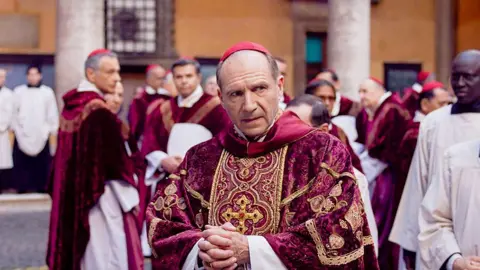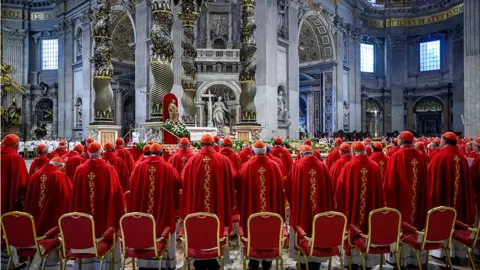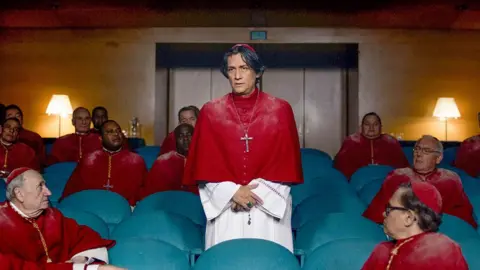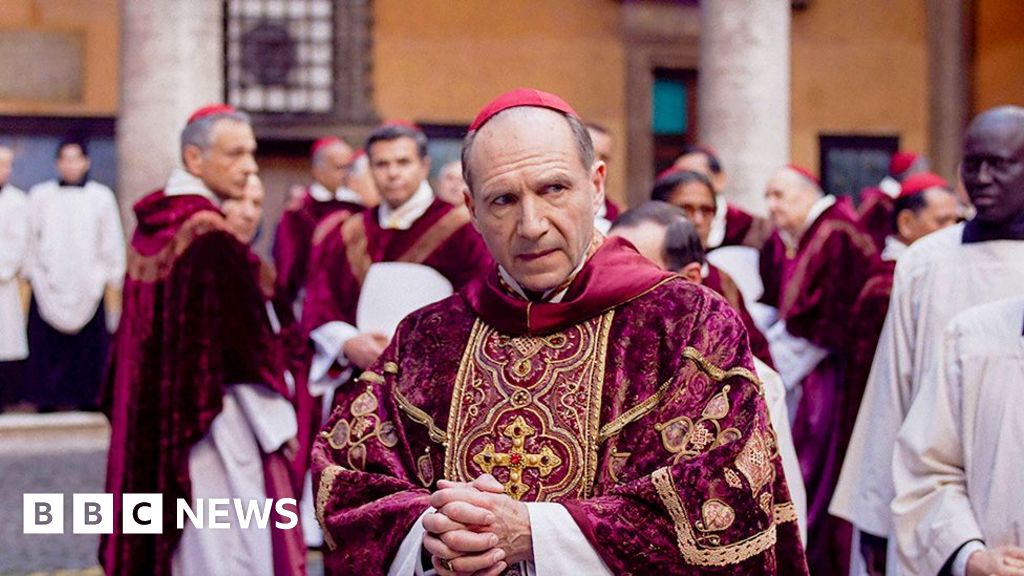 Alam
AlamThe film Conclaves in 2024 – A hit at the box office and an Oscar winner – tells the story of a papal election in which there is no obvious favorite. For many people, it was a glimpse of the rarefied world of the Vatican and the very secret process of choosing a leader for the Roman Catholic Church.
On Wednesday, May 7, life follows fiction when 134 cardinals begin the process of election of a successor to Pope Francis. As the film’s viewers know this, the Papal conclave will take place entirely behind the closed doors of the Sistine Chapel, under its world-renowned Michelangelo frescoes.
No one apart from the Vatican limits will know the result until the plume of white smoke curlves of its fireplace, which means that the Roman Catholic Church has a new leader.
But what does the film tell us about how the conclave could take place, and why do people find the process so fascinating?
“Intense responsibility”
Adapted from Robert Harris’s successful novel, Conclave shows the cardinals isolating themselves in the borders of the Vatican during the election process.
They are not allowed to communicate with anyone outside the conclave – although given the practices, they are not entirely cut.
“They all need to eat, they are not totally tightly sealed in the world,” explains Stephen Bullivant, professor of theology and sociology of religion at St Mary University, Twickenham.
This self-imposed isolation is a tradition that extends over hundreds of years.
Partly, it aims to prevent voters from being influenced by external factors, although the idea of a process that occurs behind closed doors may seem in contradiction with the “concentration of the modern world on transparency, visibility and control”, according to Anna Rowlands, professor of Catholic social thinking and practice at the University of Durham.
The film invokes an “incredible introspective atmosphere” and a feeling of withdrawal from the world, she says. “I find it hard to think of a more intense responsibility and feeling than being locked in the conclave.”
‘Many politicians’
On the screen, the claustrophobic and intense deliberations, strategic cores and tactical movements abound. A cardinal is undergoing a precursor to improve his own chances. Others with unlikely prospects urge their supporters to change their vote.
This conflict of competing interests and ideologies provides a large part of the drama of the film. “These are mainly political machinations that continue,” said Nick Emerson, the editor -in -chief of the film, told BBC earlier this year.
While some cardinals will think that the most important part is to follow divine direction, others will have anxiety to make a quick decision, explains Tina Beattie, professor emeritus of Catholic studies at the University of Roehampton.
Since the health of Pope Francis has been poor for some time, it is likely that, even before the conclave, “there will have been many politicians and to jostle for the position already behind the scenes,” she adds.
“There will be all these current fights and (the cardinals) will not all be one spirit.”
Although in the film, some of the most tense scenes focus on the act of voting, in reality, a large part of the drama can be presented in the meetings in the days preceding the official start.
Meanwhile, participants “will get to know each other, determine what are the priorities and learn to work together as a body so that they can make a unified decision,” said Professor Rowlands, who is approaching the end of a two -year detachment in the Vatican.
 Getty images
Getty imagesA complete stranger?
In the film, an unknown cardinal – secretly named by the late Pope – is catapulted into the fray.
In real life, it would not be possible. Although any Roman Catholic man baptized is theoretically eligible to be made of the Pope, all the cardinals voted in the conclave should have been publicly appointed by a previous Pope.
That said, imminent elections can be One of the most unpredictable has never been. About 80% of cardinals eligible to vote have been appointed in the past 12 years by Pope Francis. He consciously chose people around the world and with various political horizons.
Many people named by Francis come from the world in development – “from the places and contexts that are normally given a red hat”, explains Professor Rowlands.
This adds a level of uncertainty about their priorities and the ultimate decision.
 Alam
Alam‘A very human thing’
The film presents the cardinals as fallible human beings who are jostling for power.
Edward Berger director said to the BBC last year That even if the conclave was considered “an ancient spiritual ritual”, he wanted to bring participants “into modernity”.
“We put them on this pedestal, and when you look more closely, they will have mobile phones, they will smoke, they have the same problems and vices and secrets as us.”
Professor Rowlands says that the film offers a peak behind a process, with all the elements of human nature and human life: “Loss. Sangrin, ambition, fear, temptation, courage”.
She adds: “It is a very, very human thing, a conclave … It is a divine goal, but it is a very human thing.”



